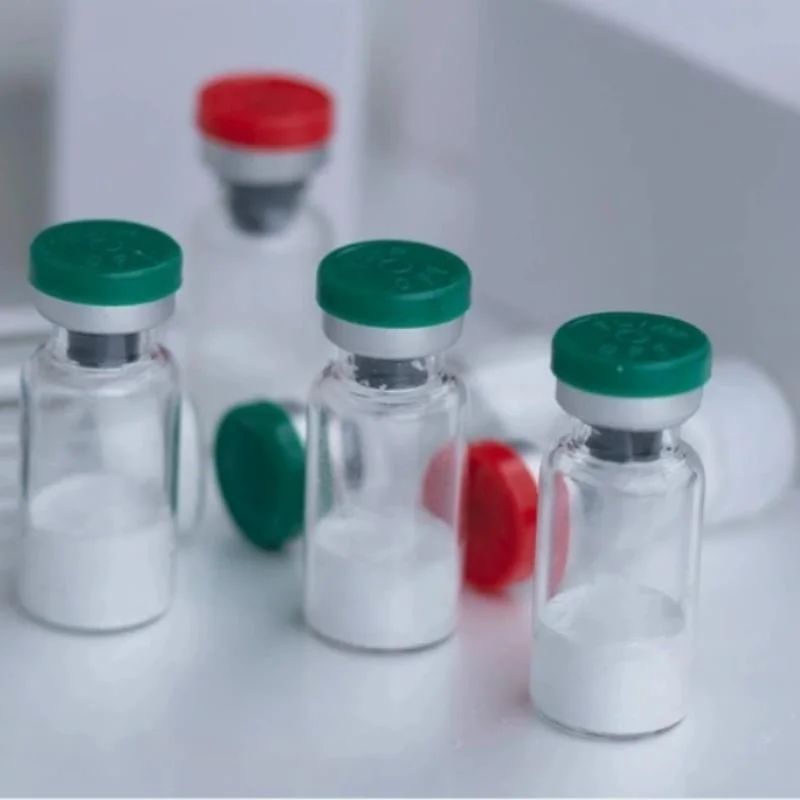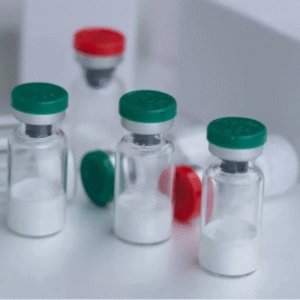Composition:
Sermorelin is a synthetic peptide analog of Growth Hormone-Releasing Hormone (GHRH 1–29).
- Peptide Structure: Sermorelin comprises the first 29 amino acids of endogenous human GHRH, which are biologically active and sufficient to stimulate the release of growth hormone (GH) from the anterior pituitary.
- Mechanism of Action: Sermorelin binds to GHRH receptors on somatotroph cells in the pituitary, stimulating the physiological release of GH in a pulsatile manner. This mimics the body’s natural GH secretion pattern more closely than direct GH administration.
- Regulation: Because Sermorelin stimulates endogenous GH, downstream feedback mechanisms (e.g., via insulin-like growth factor 1 or IGF-1) remain intact, allowing for regulated GH levels and reduced risk of excessive hormone buildup.
Benefits:
Sermorelin is primarily investigated and used in contexts where enhancing endogenous GH production is desired. The benefits, when used appropriately, include:
- Increased Endogenous GH Production:
- Stimulates the pituitary to secrete GH, promoting a more physiologic hormone balance compared to exogenous GH therapy.
- Improved Body Composition:
- GH supports lipolysis (fat breakdown) and protein synthesis, which may result in reduced body fat and increased lean body mass over time.
- Enhanced Recovery and Tissue Repair:
- GH and its downstream mediator IGF-1 are involved in muscle repair, wound healing, and connective tissue regeneration.
- Sleep and Energy Regulation:
- Sermorelin may improve sleep quality, particularly deep (slow-wave) sleep, during which GH is naturally released.
- Reduced Risk of GH-Related Side Effects:
- Since Sermorelin stimulates natural GH secretion, it avoids the supra-physiologic levels often seen with recombinant GH therapy, potentially reducing the risk of acromegaly, insulin resistance, or organ hypertrophy.
Potential Side Effects and Considerations:
While generally well-tolerated, Sermorelin may cause side effects in some individuals:
- Injection site reactions (e.g., redness, swelling, or pain)
- Transient flushing or headache
- Nausea or dizziness
- Possible increase in cortisol or prolactin when combined with certain GHS peptides
- Reduced efficacy in individuals with pituitary insufficiency, as Sermorelin requires a functioning pituitary gland to exert its effects
Contraindications may include:
- Known hypersensitivity to Sermorelin or any component of the formulation
- Active malignancy, particularly hormone-sensitive cancers, due to potential stimulation of cell growth pathways


Reviews
There are no reviews yet.